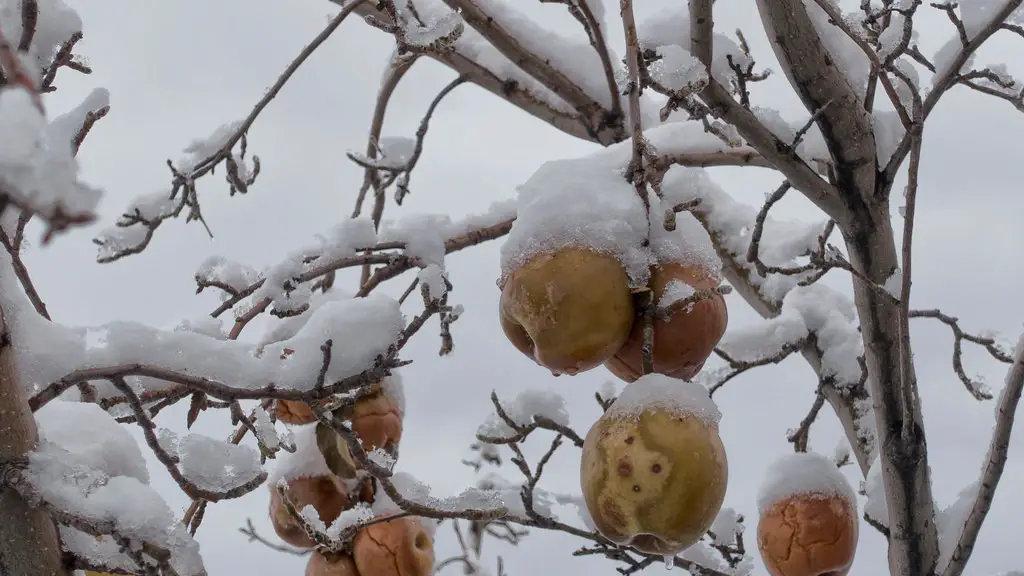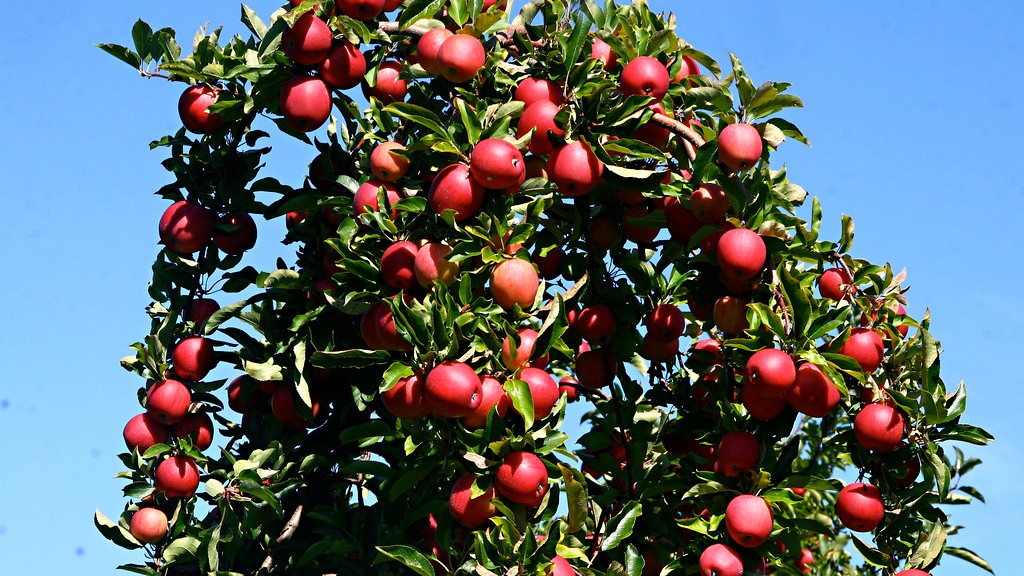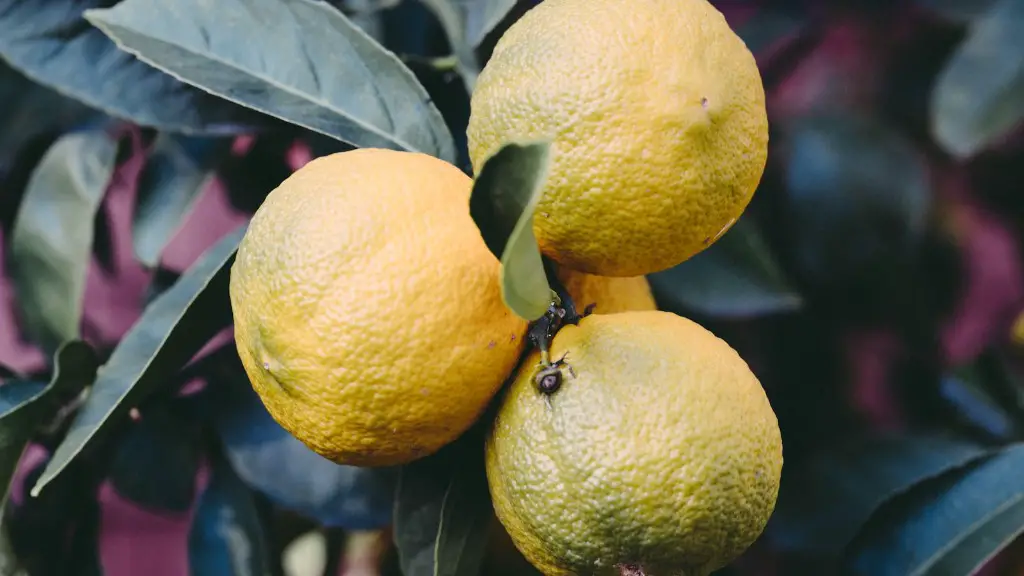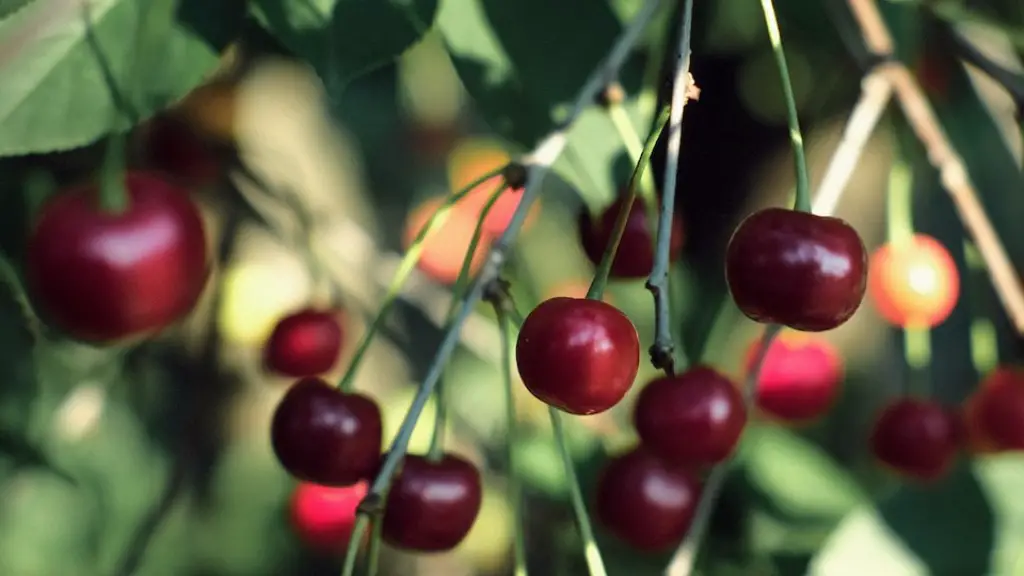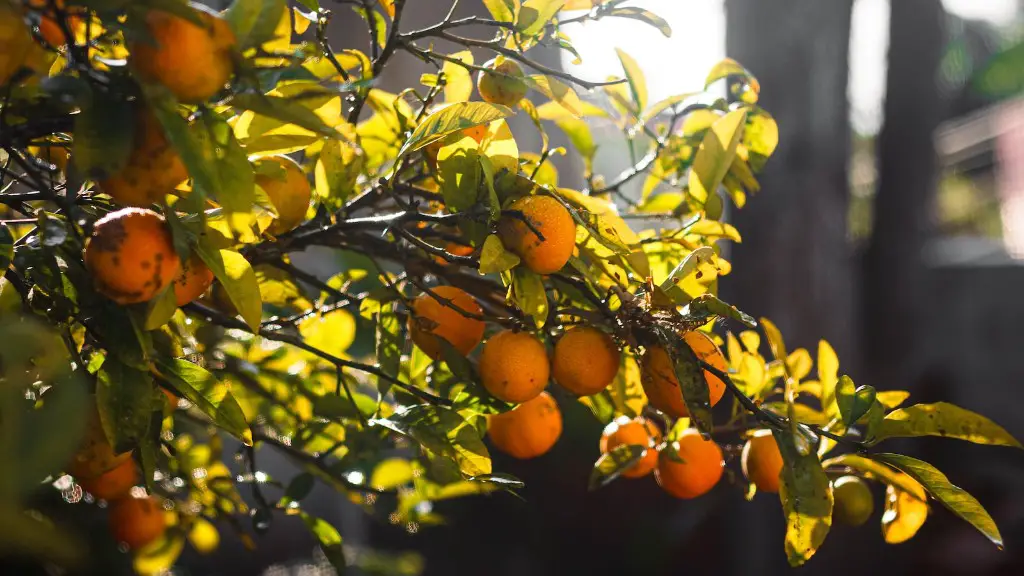Trimming an apple tree is a necessary part of keeping it healthy. A well-maintained tree produces the best fruits, so understanding when to prune is important. How and when to prune should be based on the form, season and growth of the apple tree.
When it comes to apple tree trimming, the goal is to remove dead, diseased and weak branches, as well as shape the tree for better air circulation. Different varieties of apple trees could require various approaches to trimming, so it is important to determine the type of tree before beginning.
When it comes to timing, trimming a young apple tree can be done in the winter, but mature apple trees should be trimmed in early spring when the tree begins to flower. Prune the tree while it is still dormant, and trim it again just after the harvest is complete.
Trimming an apple tree requires several tools including pruning shears, loppers, saws and hand saws. It is important to know how to safely use the equipment, and the best way is to watch an experienced tree trimmer if possible.
When trimming an apple tree, always make sure to cut above a bud at a 45-degree angle and as close to the bud as possible. Doing so will aid in the quick heal of the cut. Always keep a water source handy, such as a garden hose or water bucket, to ensure the tree receives enough hydration and is not further stressed.
Finally, the discarded branches may be considered garden waste, and must therefore be disposed of properly. Consider creating compost or mulch from the apple tree cuttings or simply cutting them up and depositing them in a green bin for collection and landfill disposal.
Caring for The Tree Through the Seasons
After pruning is done, your apple tree will need care throughout the different seasons to remain healthy. The tree needs special attention during the winter, spring and summer months. During the winter months, for example, apples require moisture in order to assist the tree in recovering from the trimmings done in early spring.
Watering the tree at the roots is essential during winter so that the apple tree can fight off diseases and fungus. Applying mulch around the base of the tree during winter can prevent water loss, while during the spring season, weeding and hoeing may be necessary to remove grass and other plants competing for resources.
Another important aspect of springtime care is a layer of compost to ensure the soil remains nutrient-rich and naturally protect the tree against disease. Using a natural insecticide can also help protect the tree against pests. During the summer months, the apple tree will likely require more water, which can be done with a garden hose during dry spells in order to avoid any wilting.
Pruning may need to be done again during the summer season, as removal of any dead leaves or branches should be done. This should also be done to thin trees that develop unnecessary foliage. The thinning should be done selectively to allow proper airflow and light to penetrate inside the foliage of the tree.
Fertilizing an Apple Tree
Fertilizing is another key step in caring for an apple tree throughout the different season. Proper pruning gets rid of the dead and weak branches and sets the tree up for a successful season ahead. Applying fertilizers adds back the necessary nutrients to the soil and supports the activity of beneficial microorganisms, helping the tree to be vigorous and disease resistant.
In order to determine the amount of fertilizer to use, take a soil sample around the root zone and analyze it with a fertilizer calculator. A good fertilization program usually consists of applying fertilizer first in late winter or early spring, followed by another application when flowers begin to form on the tree. During the late spring and summer, apply fertilizer on a three-month basis.
Organic fertilizer is often the preferred choice due to its slow release formulation, which helps to avoid over-fertilizing the tree. Lastly, make sure to deep water the tree after each fertilizer application as excess fertilizer can burn tree roots.
Insect and Disease Control of an Apple Tree
Apple trees are susceptible to various insect infestations and diseases, so insect and disease control is essential for a healthy apple tree. Good plant care practices like proper pruning and fertilizing will reduce the chance of pest and disease problems. Avoiding over-watering and over-fertilizing are also important.
To detect an infestation, inspect the tree once a week, paying attention to the trunk, leaves, stems and fruit. Early symptom detection is key in controlling pests and diseases, and it is important to identify them correctly in order to choose the best course of action.
Chemical treatments are often the go-to solution when dealing infestations, but they should be used with caution as they can be harmful to beneficial insects and animals. Organic solutions are often the best choice, as they are less likely to damage other species and the environment. Examples of organic solutions for pest and disease control include beneficial insects, neem oil, Bacillus thuringiensis and sulfur.
Harvesting and Storing Apples
Harvesting apples is an exciting process, but it requires knowledge and experience. Before harvesting, check that the apples have reached the correct maturity, which can be determined by their color and texture. Apples that are ready to be picked should come off the tree easily, otherwise wait a few days or a week until they are ready to be harvested.
Once the apples have been picked, storing them in the proper manner is essential for the apples to maintain their freshness and quality. Most varieties of apples will last for several weeks in storage, if kept in a cool, dry place. Apples should also be stored in a single layer so that air circulates around them and not directly exposed to sunlight.
If planning to store apples for a longer period of time, like months, refrigerate and wrap them in store bought plastic wraps or newspaper. Lastly, store apples away from other fruits and vegetables to avoid any cross-contamination.
What is the Best Apple Varieties?
Different apple varieties yield different amounts of an apple’s natural sugar and acid. Sugar helps in giving a sweet flavor and acid enhances the bite of an apple, so knowing the sweetness and acidity of different varieties is important when deciding which apple to pick. Essentially, the best apples are those that have a balance of sugar and acid, which provides the most optimal flavor.
Popular sweet apples include Golden Delicious, Honeycrisp and Albemarle Pippin. As for tart apples, Granny Smith and Braeburn are two of the most popular in the market. One of the most popular apple varieties is the Rome, which like other apples, combines sweetness and acidity for the perfect balance.
Choosing the right apples for a certain recipe may also depend on the season in which you are cooking. For example, for a tart apple dish that you may want to bake in the summer, Rome apples are the best. For an apple pie in the spring, Golden Delicious apples are the best choice.
Lastly, Bosc and Pink Lady apples are two popular varieties that have good texture and firmness, making them good candidates for baked goods. These two varieties are also among the most popular in the markets and usually available in the summer season.
